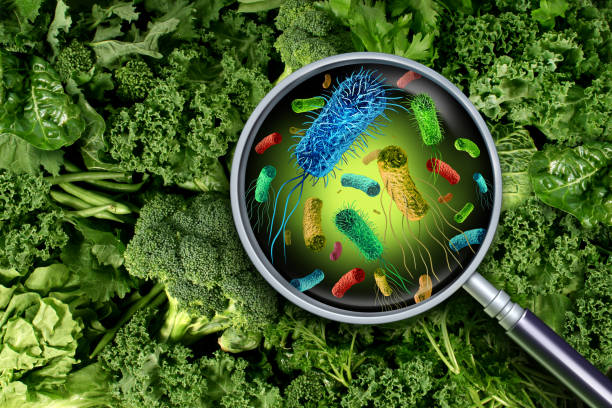Food poisoning symptoms
Food poisoning symptoms
Main food items that contribute to food poisoning
If there is such a thing as food poisoning happening, there is definitely a contributor to the poisoning.

food poison symptoms malayalam
Think of people who experience nausea and vomiting, who experience painful abdominal cramps, and pass watery stools every 15 minutes, accompanied by headaches and muscle and joint pain. When we encounter someone with these symptoms, we immediately think of food poisoning. The first question we ask the patient is what food he ate.
Symptoms and causes of food poisoning

food poisoning symptoms hindi
The first contributor to food poisoning is, of course, food. Did I spoil the food or did I use bad butter on it? An ingredient may be contaminated with microorganisms such as salmonella bacteria. Sometimes, being hungry, people eat or drink something that has a "different" smell and taste. Also sometimes, the food I had was half done.
The inside of the meat has not been touched by the heat of the boiling water. This means that microorganisms can still live safely there since the boiling temperature has not been able to penetrate their environment.
With this in mind, it becomes clear that it is dangerous to eat raw food.
The next question is to ask the patient where he got the food from? We want to know because we want to ask if other people have the same symptoms just because they ate the same food.
The question of where is also important as the health and safety certifications of the facilities must be checked. The kitchen or factory in which they prepare the goods they sell may not have been inspected and approved for operation yet.
Also, the workers in that establishment may be carriers of some diseases that can be transmitted to the food they prepare if they practice poor hygiene habits.
How the food was prepared is one of the factors causing food poisoning.
The next contributor to food poisoning is the way the food was stored if there were leftovers. Most microorganisms like room temperature so they can thrive and reproduce.
This is why it is still safe to keep leftovers in the refrigerator and then preheat them before serving them again on the table.
The final and most important contributor to cases of food poisoning is the person who ate the (infected) food. This may be due to poor hygiene practices.
This means that he does not practice hand washing before eating or that he ignores the fact that the food tastes or smells funny or that it is not covered properly.
On the other hand, in defending the infected, some microorganisms such as Salmonella do not alter the taste and smell of food (unless they are destroyed).
There they are alive and silent inhabitants who believe their habitat is actually tasty and safe to eat.
There are many contributors to food poisoning. The key here to completely avoid accidents is to make sure that the bonds from food preparation to the time it has been consumed should be healthy and safe.
The disruption of this connection predisposes the consumer to experience the worse signs and symptoms of food poisoning.
Food poisoning treatment

the first symptoms of food poisoning can occur
Not the best way to spend a few days. Food poisoning can be an unforgettable event in anyone's life because it is so overwhelming. . What may take many hours, sometimes days, to recover, homeopathy can turn into a short version and then leave the patient in better condition than they initially found.
When we decide to use homeopathy for this disease, the treatment should be chosen based on the symptoms and the cause. In other words, the symptoms point the way.
This is reason enough not to use traditional medicines to cover up what the body wants us to know. The benefits for symptom relief outweigh the amount of short relief. Whatever treatment is chosen, take it every hour if symptoms are severe and every 4-5 hours if they are less severe.
Once there is relief, stop taking the remedy. The first remedy we think of when we are poisoned by rotten meat is Arsenical Album. A person who needs it has a sudden attack of nausea, vomiting, severe weakness, and dry mouth.
There is usually anxiety, insomnia, and even fear of death. This is accompanied by unusual thirst, small sips of warm water and burning in some areas, most often rectally. There may be stress. It can often be traced back to eating ice cream or eating spoiled meat.
Another powerful remedy to consider is bryonia. Food poisoning that requires this treatment is more likely to occur from overeating. There is severe pain, and despite thirst, the sufferer does not drink the desired cold water, but vomits it.
Where the arsenic patient wants to move, the bryonia patient craves stillness. In fact, the movement only causes more nausea and retching. Even moving his head or eyes can make things worse. It feels good when applied to the abdomen and is often rolled into a ball on the floor or bed.
The reason can sometimes be found to refer directly to a serving of cabbage, ice cream, aged cheese, or simply foods that are too rich.
Pulsatilla is a treat that often satisfies those who crave ice cream, but simply can't stand it. It can also be caused by eating spoiled fish, pork, and fatty and liver foods such as peanut butter, cream, and cheese.
There is bloated food and burps that taste tainted. The mouth is often dry but there is seldom a thirst and desire for fresh air or a cool light breeze on it. While the symptoms are not severe, the person feels relief by walking outdoors.
